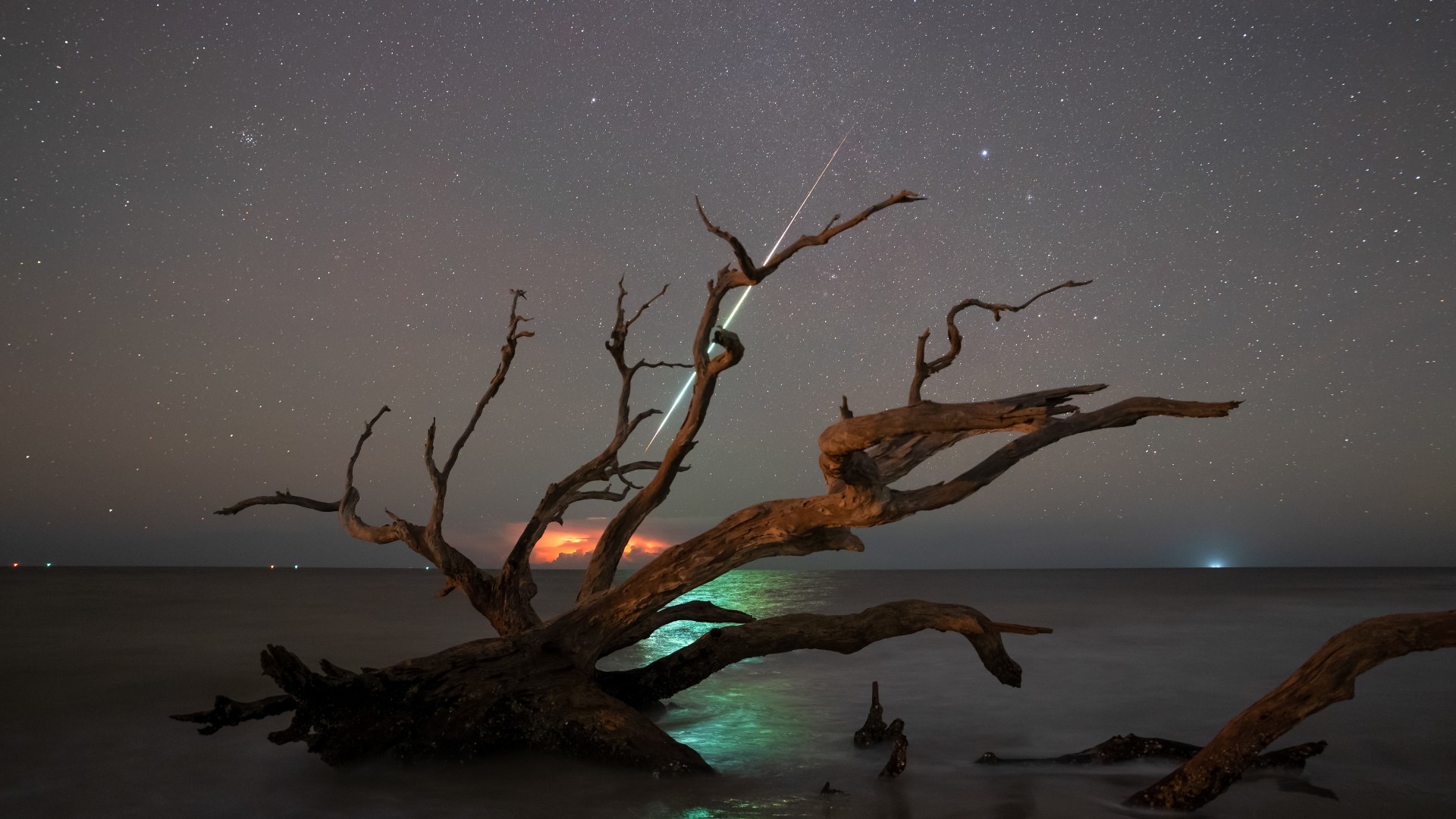Gamma Normid meteor shower peaks on March 15 for the southern hemisphere
With a bit of luck and patience, streaks and fireballs from the weak annual meteor shower will be visible whenever its radiant in the constellation Norma is above the horizon.

The annual meteor shower known as the Gamma Normids (γ-Normids) peaks this year on Wednesday (March 15), providing a challenging target for patient Southern Hemisphere skywatchers.
The Gamma Normids is a weak meteor shower that is active from Feb. 25 to March 28. According to the The Sky Live, at its peak the Gamma Normids will produce around six meteors per hour but this is calculated assuming a completely dark sky and ideal viewing conditions. That means under actual viewing conditions far fewer meteors will be visible from the Gamma Normid meteor shower.
The meteor shower's radiant, the point from which its meteorites appear to stream, is located in the southern sky constellation Norma. That means that the Gamma Normids are best seen whenever the small constellation Norma is above the horizon. Universe Guide gives the coordinates of the radiant point corresponding with the star Gamma Normae, the brightest in the constellation. From Buenos Aires, Argentina, the radiant point in Norma is above the horizon all night; from Sydney, Australia, the shower should be visible from around 7:42 p.m. local time until dawn.
Related: Meteor showers 2023: Where, when and how to see them

If you need a telescope to better acquaint yourself with the night sky, we recommend the Celestron Astro Fi 102 as the top pick in our best beginner's telescope guide.
Meanwhile, In the Sky explains that skywatchers in New York and anyone in the Northern Hemisphere at a latitude greater than 30 degrees probably won't get to see the Gamma Normids as the radiant won't rise to 10 degrees over the horizon. Below 30 degrees, there is the chance to see meteors streaking upwards from the south.
Like all meteor showers, the Gamma Normids are created when Earth on its yearly journey around the sun passes through debris left behind by a comet or an asteroid. This debris which consists of fragments ranging from the size of dust to small pebbles spreads out along the path of its parent object through the solar system.
As our planet passes through the stream of fragments that give rise to the Gamma Normids, these fragments enter Earth's atmosphere at around 125,000 miles per hour (201,000 kilometers per hour), or about 85 times as fast as a Lockheed Martin F-16 fighter jet.
Get the Space.com Newsletter
Breaking space news, the latest updates on rocket launches, skywatching events and more!
The debris usually burns up at an altitude of around 44 miles (70 kilometers) to 62 miles (100 kilometers) above the Earth creating bright streaks of light, with larger pieces giving rise to the occasional bright fireball.
Meteor showers like the Gamma Normids peak when Earth reaches a particularly dense patch of fragments where comets or asteroids have blasted off large amounts of material as a result of heating by the sun.

If you miss the Gamma Normid meteor shower, you can catch the Lyrid meteor shower when it begins in just over a month on April 22. The Lyrids have an hourly rate slightly higher than the Gamma Normids at around 18 meteors per hour.
If you're hoping to catch a look at meteor showers as they reach their peaks, our guide on the best binoculars is a great place to start. For more up-close views of more distant objects, see our guide on the best telescopes.
If you're looking to take photos of meteor showers or anything else in the night sky, don't miss our our guides on how to photograph the moon, the best cameras for astrophotography and best lenses for astrophotography.
Editor's Note: If you snap the Gamma Normid meteor shower and would like to share it with Space.com's readers, send your photo(s), comments, and your name and location to spacephotos@space.com.
Follow us @Spacedotcom, or on Facebook and Instagram.
Join our Space Forums to keep talking space on the latest missions, night sky and more! And if you have a news tip, correction or comment, let us know at: community@space.com.

Robert Lea is a science journalist in the U.K. whose articles have been published in Physics World, New Scientist, Astronomy Magazine, All About Space, Newsweek and ZME Science. He also writes about science communication for Elsevier and the European Journal of Physics. Rob holds a bachelor of science degree in physics and astronomy from the U.K.’s Open University. Follow him on Twitter @sciencef1rst.









